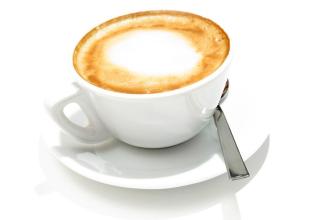Description of characteristics and Flavor of Coffee beans in Latin America
Description of characteristics and Flavor of Coffee beans in Latin America
The coast of Brazil and the South Atlantic are important fishing grounds in the world, rich in sardines, tuna, bass, mackerel, cod and a variety of shrimp. The catch is among the highest in the world. The variety of animals and plants in the Amazon rainforest is unique in the world, with as many as 86000 to 90, 000 plant species alone. There are many edible, medicinal and economically valuable resources, such as mahogany, sandalwood, mahogany, ointment, snake mulberry, cinnamon, cinchona and various coconut and palm trees; some valuable economic forests such as spruce and cedar are growing in the Andes and Central America; salt-tolerant mangroves and tannin extract trees are also growing in the coastal areas; flood-resistant tree species and other plants are growing in the floodplain.
Brazil (Brazil) aroma 3 minutes brightness 3.5 minutes mellow 3.5 minutes flavor 4 points aftertaste 4 points
Suitable for baking: the base beans used by City/Full city/Espresso as Espressode should not be baked too deep, because the bean density is low at low altitude, and the pot produces coke bitterness under deep baking, and it is best to start the pot before the second explosion. As for high-grade Brazilian beans, they can have a wide baking range, ranging from city to the middle of the second explosion.
Brazil is the largest coffee producer in the world, and its history can be traced back to the early 17th century. Although the output of Brazilian coffee is the largest in the world, most of them are low-quality Arabica beans and Robusta coffee beans. This is because most of the Brazilian coffee grows in a low altitude, non-volcanic soil, or even a prairie with no forest shade at all. These congenital defects cannot be made up for by new farming techniques, so most people in the boutique coffee world do not have a good impression of Brazilian coffee. However, this does not mean that Brazilian coffee is unbearable. In recent years, Brazilian coffee farmers have worked hard to equate Brazilian coffee with high-quality coffee, and the country's coffee associations have also done their best to help, and their efforts have paid off. the prices auctioned in the coffee market are also quite beautiful. The three main coffee producing areas in Brazil are Bahia, Minas Gerais and Sao Paulo, but most of the best Brazilian beans come from Minas Gerais, and the most famous Hirado is a small producing area in Minas Gerais. As for Santos,
(Santos) is the largest and oldest coffee export port in the bar, and beans marked Santos may come from anywhere in Brazil, so it is not a useful regional or grade indicator. Ordinary Brazilian coffee beans not only have a poor appearance and uneven size, but the important thing is that the taste is very mediocre and undistinctive, and some of them have an unpleasant smell of iodine. Good Brazilian beans come from old coffee trees grown in Bourbon. They smell like stone fruit, taste sweet and low acidity, have the bittersweet taste of chocolate, and some people use the term "extremely smooth and smooth" (Strictly Soft) to describe top Brazilian coffee. Brazil beans have always been an indispensable ingredient in Espresso recipes because they are rich in oil. Good Brazilian beans have mellow, flavor and sweetness, but they do not capture the flavor, providing the best stage for other coffee to enjoy.

Important Notice :
前街咖啡 FrontStreet Coffee has moved to new addredd:
FrontStreet Coffee Address: 315,Donghua East Road,GuangZhou
Tel:020 38364473
- Prev

Flavor description of Yunnan Tieka Coffee beans introduction to the characteristics of varieties produced by taste treatment
Flavor description of Yunnan Ironpika Coffee beans Typica: the oldest native variety in Ethiopia and southeastern Sudan, all Arabica are derived from Tibica. Elegant flavor, but weak physique, poor disease resistance, fruit production
- Next

The Grinding scale of Solar Yerjia Coffee beans; introduction to the taste of the manor by regional treatment method
The cool and foggy mountain stream village in the Yega Chuefei producing area is cool and foggy all year round, with a gentle breeze in summer, cool but not hot, rain but not damp, and no cold harm in winter. It is the best environment for planting Arabica. There are no large coffee plantations. Coffee farmers grow coffee mixed with other crops, usually in
Related
- Detailed explanation of Jadeite planting Land in Panamanian Jadeite Manor introduction to the grading system of Jadeite competitive bidding, Red bid, Green bid and Rose Summer
- Story of Coffee planting in Brenka region of Costa Rica Stonehenge Manor anaerobic heavy honey treatment of flavor mouth
- What's on the barrel of Blue Mountain Coffee beans?
- Can American coffee also pull flowers? How to use hot American style to pull out a good-looking pattern?
- Can you make a cold extract with coffee beans? What is the right proportion for cold-extracted coffee formula?
- Indonesian PWN Gold Mandrine Coffee Origin Features Flavor How to Chong? Mandolin coffee is American.
- A brief introduction to the flavor characteristics of Brazilian yellow bourbon coffee beans
- What is the effect of different water quality on the flavor of cold-extracted coffee? What kind of water is best for brewing coffee?
- Why do you think of Rose Summer whenever you mention Panamanian coffee?
- Introduction to the characteristics of authentic blue mountain coffee bean producing areas? What is the CIB Coffee Authority in Jamaica?

